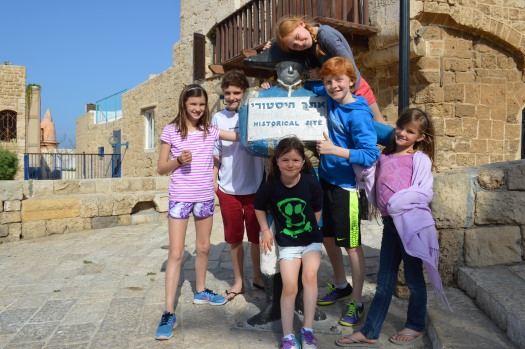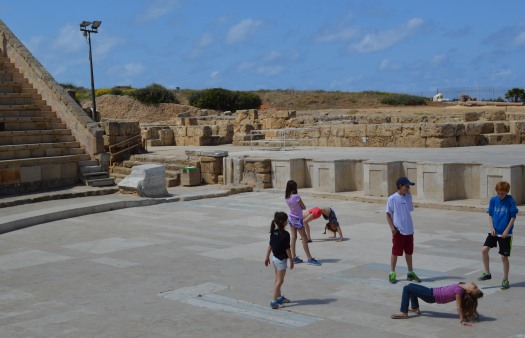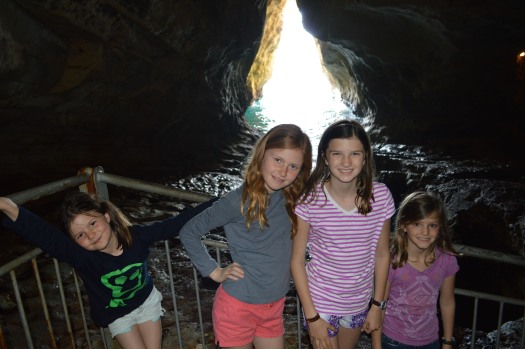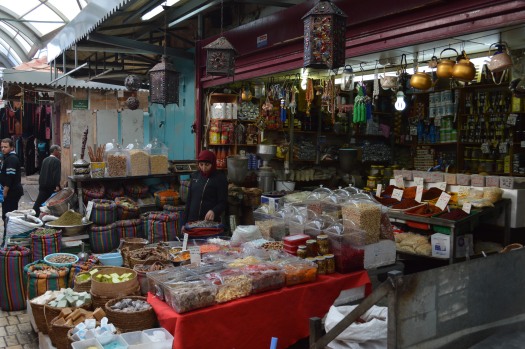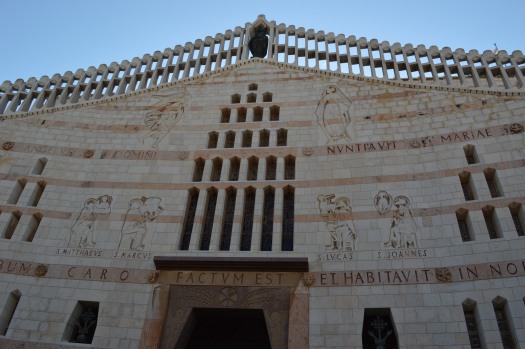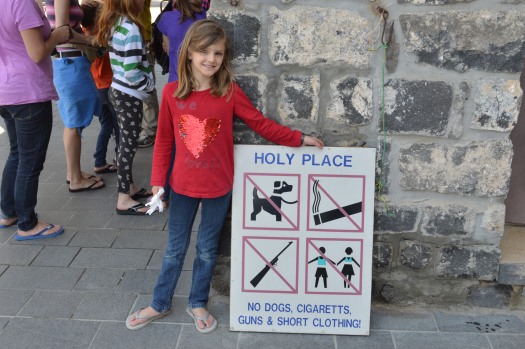Israel, Part I
May 8th, 2014 by willmarks
When checking in your baggage before your flight, always count the number of bag tags that are handed to you.
As expected, El Al demonstrated tight security at the Barcelona airport, asking us multiple questions about our forthcoming trip to Israel. This all took place at one El Al counter, and each of our 5 bags was tagged with a special blue tape when the inquiry was completed. Then we moved on to the next counter for the more “normal” process. It was here where our luggage was officially checked in, or four of our five bags. Unfortunately, we failed to notice that Evelyn’s duffel had not been tagged; of course I didn’t count the small stickers handed to us with our seat tickets.
After retrieving just four suitcases in Tel Aviv, we then realized the mistake, and now fast forward eight days to our final night, back in Tel Aviv after circling Israel and Jordan, when Evelyn’s bag finally arrived at our hotel.
Our friends from San Francisco (but living in Madrid), the Headricks, met us on April 9, the morning after our arrival at the Renaissance Tel Aviv (nice hotel and beautifully situated on the beach) before we headed off on our journey through Israel and Jordan. A van pulled up, driven by Ahmed, with guide Jerry from Florida, a gentile married to an Israeli woman from Tel Aviv.
Jaffa was our first stop, just south of Tel Aviv. While the below photo doesn’t show it, Jaffa clearly stands out as ancient, with its 4,000 year-old harbor, versus the very modern Tel Aviv proper, in the distance.
Jaffa was founded, according to the Hebrew Bible (and Lonely Planet), by Japheth, the son of Noah, and this port town became important during the time of Solomon (around 1000 BC), while he was building the First Temple in Jerusalem. Jaffa fell in and out of multiple hands, including Assyrians, Persians, the Hellenistic Empire, Muslims, Christians, and Napoleon (pictured), briefly in 1799.
Moving north, Caesarea is all about the Roman ruins. While we have seen our fair share of this period in history while in Spain, Caesarea is a beautiful setting on the coast and not far from Tel Aviv. What is visible, including the theater, was completed under the reign of Herod in 10-9 BC, and named Caesarea in honor of Herod’s patron, Octavian Augustus Caesar. After conquests by various parties, it was eventually destroyed and deserted around 1265.
On the Caesarea site…
…and on stage, where tourists tested their vocal chords and our girls tested their flexibility…
After consuming shawarma and falafel in the Haifa environs, we moved further north to Rosh Hanikra, on the Lebanon border, to observe the white cliffs and the grottos, formed by underground shocks and the sea pounding the soft chalk rocks over years and years.
On top of the hill is Lebanon…
…and through the hill is a tunnel, dug in 1943 to extend a Cairo-Haifa train line to Beirut; however, it is blocked off inside the mountain, right at the border point.
Back south again to the coastal town of Acre (Akko), where we visited the Knights’ Halls; Lonely Planet says this was the headquarters of the crusading Knights Hospitallers, but was buried under rubble in 1291. From here we entered the Turkish bazaar…
Everything is a relatively short drive in Israel; Tel Aviv and Haifa are less than 100 kilometers apart. The Crowne Plaza, where we stayed in Haifa, offered a nice view of the port…
… and the hotel was conveniently located near a good restaurant, Barbarossa, where we enjoyed the Barça vs Atlético Madrid semifinal Champions League match, which sadly fell in the wrong hands.
Day 2 of our tour commenced with a short stop for photos of the Bahá’í Gardens, part of the Bahá’í World Centre, headquarters of this fast growing religion, with 7 million followers, actually not far behind Judaism’s 14 million.
The rest of the day was mostly about Christianity, (after all, I was the only 100% Jew in our group of 10) beginning with Nazareth and the Basilica of the Annunciation. This 1960’s structure is considered by many to be on the site of Mary’s home, where the New Testament states that the Angel Gabriel appeared to tell Mary that she would give birth to the Son of God, known as the Annunciation.
Next was a paddle down the Jordan River. We had actually expected kayaks, rather than rafts, so I am violating our internal agreement to recite the more romantic “we kayaked down the Jordan River.” Still, we navigated a much anticipated “waterfall”; o.k., it was a 6-foot drop.
Lunch was overlooking the Sea of Galilee, with the Golan Heights and Syria in the distance, behind MEM.
On to Capernaum, apparently Jesus’s home base at Galilee, and where he recruited his first disciples, including St. Peter. We were told to cover our legs, at least to the knees, for the holy sites (and not to pack heat)…
4th century synagogue in Capernaum…
Our gang with St. Peter in Capernaum, the Sea of Galilee in the background…
In the same area, we visited Tabgha, “where Jesus withdrew to frequently,” and where resided a large community of Christians of Jewish descent during the first four centuries. Here we entered the Church of the Multiplication of the Loaves & Fishes, a 1982 church built on the site of a 5th century Byzantine church; the original mosaic floor can still be seen. Mosaics include a Nile meter “used for measuring the height of the Nile, and possibly also the Sea of Galilee.”
Also in Galilee, we stopped by the Mount of the Beatitudes; this church, built in 1937, is in the locale where it is believed that Jesus gave his Sermon on the Mount.
Finally, we ended our Christian day up north with a visit to Yardenit, a baptismal site on the Jordan River, which the Marks and Headrick Jews and gentiles alike agreed was a waste of time.
Watching a couple of ladies before they dunked…
After a productive day moving from Haifa to Nazareth to the Jordan River (“kayaking”) to Christian sites surrounding the Sea of Galilee, we were still able to arrive in Jerusalem at a reasonable evening hour. Now the trip really begins…

